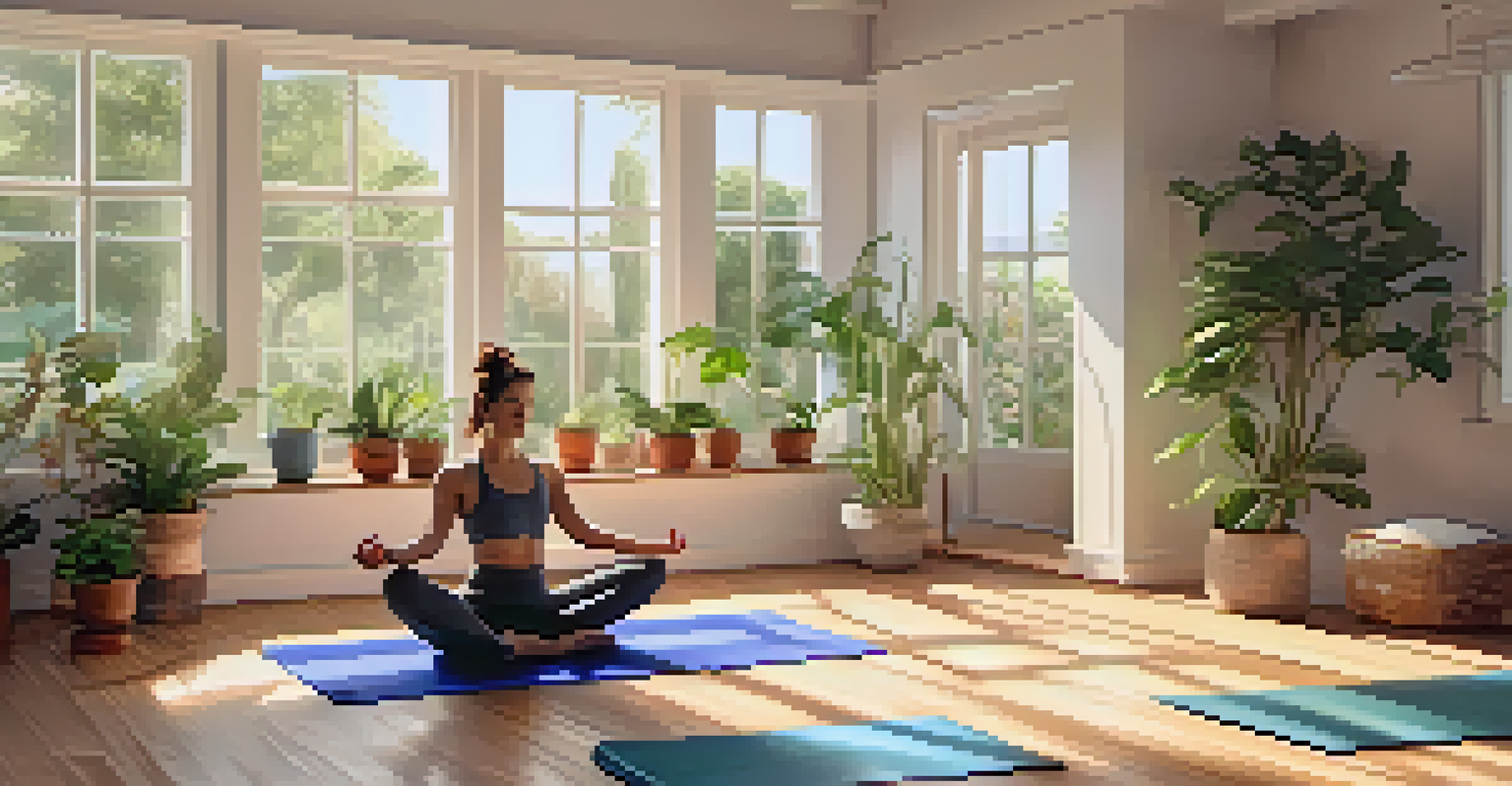Tips for Practicing Yoga Safely to Enhance Flexibility

Understand Your Body's Limits Before Practicing Yoga
Before diving into yoga, it’s crucial to understand your body's unique limitations. Everyone's body is different, so what works for one person might not work for you. Take time to listen to your body and recognize any areas of tension or discomfort.
Yoga is the journey of the self, through the self, to the self.
Being aware of your current flexibility level will help you select appropriate poses and avoid injuries. For instance, if you find forward bends challenging, it’s wise to ease into them gradually instead of pushing too hard.
Remember, yoga is a personal journey. Embrace where you are today and focus on gradual progress rather than comparing yourself to others in the class.
Warm Up Your Muscles with Gentle Stretches
A proper warm-up is essential for safely enhancing flexibility during yoga. Think of your muscles like rubber bands; they need to be warmed up before stretching further. Engage in gentle movements or stretches to prepare your body for more intense poses.

Dynamic stretches, such as arm circles and leg swings, can effectively increase blood flow and warmth in your muscles. This not only helps prevent injuries but also allows you to achieve deeper stretches during your practice.
Know Your Body's Limits
Understanding your unique limitations is essential for a safe and effective yoga practice.
Make warming up a non-negotiable part of your yoga routine. This small step can significantly enhance your overall flexibility and safety.
Use Props to Support Your Flexibility Journey
Yoga props like blocks, straps, and bolsters are invaluable tools for practicing safely. They can help bridge the gap between your current flexibility level and your goals. For example, using a strap can assist you in reaching your feet during stretches without straining.
The body is your temple. Keep it pure and clean for the soul to reside in.
Props not only provide support but also encourage proper alignment. This is especially helpful in challenging poses where maintaining balance is crucial. Remember, using props is a sign of strength, not weakness!
Incorporating props into your practice allows you to explore poses with greater ease, enhancing flexibility while minimizing the risk of injury.
Practice Mindfulness and Focus on Breath Control
In yoga, mindfulness is as important as the physical practice. By focusing on your breath, you can cultivate a deeper awareness of your body and its movements. This connection helps you recognize when to push forward and when to ease back, ensuring a safer practice.
Try to synchronize your breath with your movements; inhale as you lengthen and exhale as you deepen into poses. This rhythm not only enhances your flexibility but also calms your mind, making your practice more fulfilling.
Warm Up for Better Flexibility
Engaging in gentle stretches before yoga helps prepare your muscles and enhances your flexibility.
Mindfulness in yoga encourages self-compassion, allowing you to honor your body's needs in each moment.
Stay Hydrated for Optimal Muscle Function
Hydration plays a vital role in maintaining optimal muscle function during yoga. Dehydrated muscles can become stiff and less responsive, which can hinder your flexibility. Make it a habit to drink water before, during, and after your practice to keep your muscles hydrated.
Consider sipping water throughout your session, especially if you're practicing in a warm environment. This can help prevent fatigue and keep your muscles pliable, making it easier to move into deeper stretches.
Remember, staying hydrated is not just about drinking water; it’s also about nourishing your body with hydrating foods like fruits and vegetables.
Listen to Your Body and Rest When Needed
Yoga is about balance, and that includes knowing when to push yourself and when to rest. It’s perfectly okay to take a break or modify a pose if you're feeling fatigued or uncomfortable. Ignoring your body's signals can lead to injuries that set back your flexibility goals.
Incorporate rest days into your routine to allow your body to recover and adapt. Consider gentle restorative yoga as a way to maintain flexibility without overexertion.
Listen and Rest When Needed
Honoring your body's signals and incorporating rest is crucial for sustainable progress in yoga.
Ultimately, honoring your body’s needs will lead to a more sustainable and enjoyable yoga practice.
Gradually Increase the Intensity of Your Practice
As you progress in your yoga journey, it’s essential to gradually increase the intensity of your practice. Sudden changes in difficulty can lead to injuries and frustration. Instead, build on your foundation slowly, adding new poses and challenges as your body adapts.
For instance, if you’ve mastered basic forward bends, you might consider adding variations or trying deeper poses over time. This gradual approach helps ensure your body is prepared for the increased demands.

Remember, consistency is key. Regular practice, paired with gradual intensity, will lead to significant improvements in flexibility.